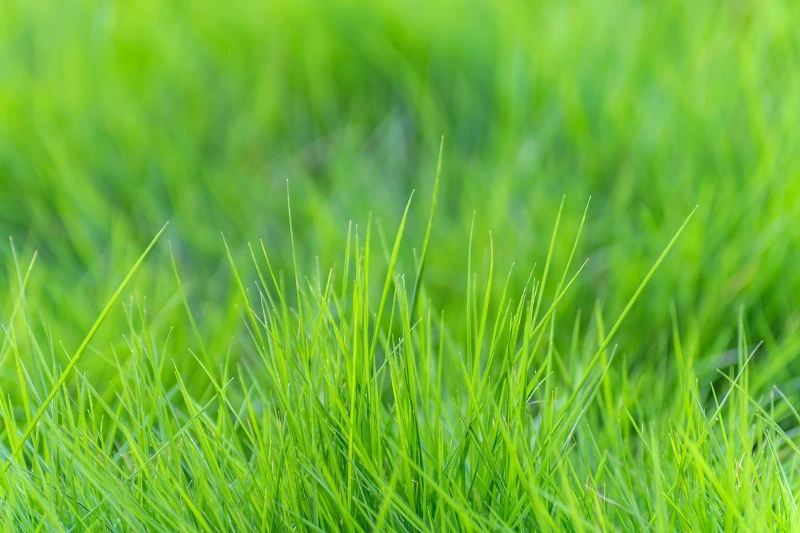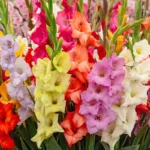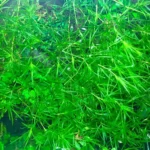
When we think of grass, we often picture lush lawns, sprawling fields, or the vibrant green carpets under our feet during a summer picnic. However, there’s much more to this common plant than meets the eye. Grass is not only a vital component of our ecosystems but also plays a significant role in our daily lives, from providing habitat for wildlife to contributing to the beauty of our landscapes. In this blog, we’ll uncover some fascinating facts about grass that highlight its diversity, importance, and surprising characteristics. Whether you’re a gardening enthusiast, a nature lover, or just curious about the world around you, these intriguing insights will deepen your appreciation for this remarkable plant. So, let’s dive into the wonderful world of grass!
There are over 10,000 species of grass. Grass is a diverse family of plants belonging to the Poaceae family, which includes a wide variety of species adapted to different environments. This extensive diversity allows grasses to thrive in various climates, from tropical regions to cold temperate zones. Each species has unique characteristics, such as growth habits, leaf shapes, and reproductive strategies, enabling them to occupy numerous ecological niches.
Some grasses, like Wheat and Rice, are major food crops. Grasses such as wheat (Triticum) and rice (Oryza sativa) are among the most important food crops globally, serving as staple foods for billions of people. These grasses are cultivated extensively in agricultural systems due to their high yields and adaptability to different growing conditions. Wheat is a key ingredient in bread and other baked goods, while rice is a fundamental part of diets in many Asian countries, providing essential carbohydrates and nutrients.
Grass is a primary food source for herbivores like cows and horses. Many herbivorous animals, including cows, horses, and sheep, rely on grasses as their primary food source. Grasses are rich in cellulose, which, when digested, provides essential nutrients and energy. The grazing habits of these animals play a critical role in maintaining grassland ecosystems, as their feeding promotes new growth and helps control invasive plant species.
Golf courses feature meticulously trimmed grass. Golf courses are renowned for their lush, well-maintained grass, which is essential for the game’s playability and aesthetics. The grass on golf courses, often a specialized variety like Bentgrass or Bermuda grass, is carefully groomed through regular mowing, aeration, and fertilization. This meticulous maintenance creates a smooth and consistent surface that enhances the golfing experience while also contributing to the overall beauty of the landscape.
The World’s Longest Grass Blade on Record measures over 17 feet. The record for the longest grass blade is held by a species of giant reed (Arundo donax), which can grow exceptionally tall under optimal conditions. Measuring over 17 feet, this remarkable grass demonstrates the incredible growth potential of certain grass species, particularly in favorable climates. Such giant grasses often thrive in wetlands and along riverbanks, playing a significant role in their ecosystems.
Bamboo, a type of grass, is one of the fastest-growing plants. Bamboo, classified as a grass, is known for its rapid growth rate, with some species capable of growing up to 35 inches in a single day under ideal conditions. This incredible growth makes bamboo an important resource for construction, furniture, and even food in some cultures. Its strength and flexibility have made it a favorite material for various applications, while its fast growth contributes to sustainable forestry practices.
Lawns composed of various grass species can create a diverse and resilient ecosystem. Lawns are often seen as simple patches of green, but when composed of multiple grass species, they can support a rich biodiversity. These diverse lawns can provide habitats for various insects, birds, and small mammals, enhancing local ecosystems. Additionally, a mix of grass species can improve resilience to pests and diseases, reducing the need for chemical interventions.
Grass can signal stress chemically and foster plant community resilience. Grasses have evolved complex chemical signaling mechanisms to respond to environmental stressors such as drought or herbivory. When stressed, grasses can release volatile organic compounds that communicate distress to neighboring plants, prompting them to bolster their defenses. This chemical signaling can enhance the resilience of plant communities, allowing them to adapt and survive in challenging conditions.
Kentucky Bluegrass is a popular grass for lawns in the United States. Kentucky Bluegrass (Poa pratensis) is favored for residential lawns across the United States due to its lush appearance, rich color, and ability to thrive in cooler climates. This grass type forms a dense, carpet-like turf that is both aesthetically pleasing and durable. Its deep root system allows it to withstand drought conditions, making it a popular choice for homeowners seeking a resilient lawn.
The smell of freshly cut grass is a plant distress call. The pleasant, earthy scent of freshly cut grass is actually a result of the release of volatile organic compounds known as green leaf volatiles (GLVs). These compounds are emitted by grasses when they are damaged, acting as a distress signal to neighboring plants and herbivores. This chemical response can attract predators of herbivorous insects, helping to protect the grass from further damage.
Grass can adapt to diverse climates and environments. Grasses are remarkably adaptable, thriving in a wide range of climates and soil types. From arid deserts to tropical rainforests, different grass species have evolved unique adaptations that allow them to survive in varying conditions. For instance, some grasses have deep root systems that enable them to access water stored deep in the soil during droughts, while others have developed mechanisms to tolerate flooding. This adaptability makes grasses a vital component of many ecosystems, contributing to soil stabilization, water retention, and habitat creation.
Grass has been used for thatching roofs and making baskets. Historically, grasses have been utilized by various cultures for practical purposes, such as thatching roofs and crafting baskets. Thatch, made from dried grasses, provides excellent insulation and protection from the elements, making it a traditional roofing material in many regions. Additionally, grasses like rushes and reeds are commonly used to weave baskets, mats, and other artisanal items due to their flexibility and strength. These traditional practices highlight the versatility of grass as a resource for sustainable living.
Wheatgrass is consumed as a health drink in some cultures. Wheatgrass, the young shoots of the wheat plant (Triticum aestivum), is celebrated for its nutritional benefits and is often consumed as a health drink. Rich in vitamins, minerals, and antioxidants, wheatgrass is believed to boost energy levels, detoxify the body, and improve digestion. Many health-conscious individuals incorporate wheatgrass juice into their diets, either as a standalone drink or blended into smoothies, reflecting the growing interest in plant-based nutrition.
Ancient Egyptians used papyrus, a type of grass, to create paper. Papyrus (Cyperus papyrus), a sedge that is often mistaken for grass, played a crucial role in ancient Egyptian culture as one of the first materials used for writing. The Egyptians harvested the papyrus plant, stripping away its outer layers and processing the inner pith to create sheets of paper-like material. This innovation facilitated record-keeping, literature, and communication, profoundly influencing the development of writing and documentation in human history.
Grass plays a crucial role in preventing soil erosion. Grasses are essential for soil conservation, as their extensive root systems help bind the soil together, preventing erosion caused by wind and water. This stabilizing effect is particularly important in areas prone to erosion, such as slopes and riverbanks. By reducing soil erosion, grasses contribute to maintaining soil health, preserving nutrients, and supporting agricultural productivity, making them vital to sustainable land management practices.
Lawns act as carbon sinks, helping mitigate climate change. Lawns, particularly those composed of healthy grass, can function as carbon sinks by sequestering carbon dioxide from the atmosphere through photosynthesis. This process helps reduce greenhouse gas concentrations and contributes to climate change mitigation. The ability of grass to absorb carbon is enhanced by proper lawn management practices, such as regular mowing and fertilization, which promote vigorous growth and increase carbon storage in the soil.
“Snake in the grass” is a metaphor for hidden deceit or danger. The phrase “snake in the grass” serves as a metaphorical expression referring to hidden threats or deceitful individuals who may appear harmless at first glance. This idiom draws on the natural behavior of snakes, which can camouflage themselves in grassy environments, making them difficult to detect. The term emphasizes the importance of vigilance and awareness in recognizing potential dangers that may not be immediately obvious.
Zoysia grass can tolerate heavy foot traffic, making it ideal for sports fields. Zoysia grass (Zoysia spp.) is a warm-season grass known for its durability and ability to withstand heavy foot traffic, making it a popular choice for sports fields, golf courses, and high-traffic lawns. Its dense growth habit allows it to recover quickly from wear and tear, ensuring a resilient playing surface. Additionally, Zoysia grass is drought-tolerant and requires less maintenance compared to other grass types, making it an efficient choice for both recreational and aesthetic purposes.
Grass pollen is a common allergen that can trigger allergies. Grass pollen is a well-known allergen that can cause allergic reactions in many individuals, particularly during the spring and summer months when grasses are in bloom. Common symptoms of grass pollen allergies include sneezing, nasal congestion, itchy eyes, and respiratory issues. Various grass species, such as Bermuda grass and Timothy grass, are notorious for producing significant amounts of pollen, leading to increased awareness and management strategies for those affected by seasonal allergies.
Some grass varieties, like reeds, are used to create musical instruments. Certain grass species, particularly reeds (Phragmites spp. and others), are utilized in the construction of musical instruments such as woodwinds. The unique properties of reeds allow them to produce specific sounds when vibrated, making them essential components in instruments like clarinets, saxophones, and oboes. The quality of the reed can significantly affect the instrument’s tone and playability, leading musicians to carefully select and even customize reeds for optimal performance. This use of grass highlights its cultural significance beyond the ecological realm, showcasing its role in the arts and music.
Grasshoppers and locusts are important members of grassland ecosystems. Grasshoppers and locusts play a vital role in grassland ecosystems as herbivores, feeding on grasses and other vegetation. They serve as a food source for a variety of predators, including birds, reptiles, and small mammals, thus contributing to the food web. Additionally, their feeding activity can stimulate plant growth by promoting new shoots and maintaining plant diversity. In some cases, locusts can form swarms that impact agricultural areas, but their ecological role in nutrient cycling and as prey species is crucial for ecosystem health.
Sugarcane is a type of grass used for sugar production. Sugarcane (Saccharum officinarum) is a tall perennial grass that is cultivated primarily for its high sugar content, making it a vital crop for sugar production worldwide. Sugarcane thrives in tropical and subtropical climates, where it is often grown in large plantations. The extraction of sugar from sugarcane involves crushing the stalks to release the juice, which is then processed and refined into various forms of sugar. Beyond sugar, sugarcane is also used to produce biofuels, molasses, and other by-products, showcasing its economic importance.
Golf course greens are typically composed of specialized grass varieties. The grass on golf course greens is often made up of specialized varieties, such as Bentgrass (Agrostis stolonifera) or Poa annua, which are chosen for their ability to create a smooth, fast surface ideal for putting. These grasses require meticulous care, including frequent mowing, aeration, and topdressing, to maintain their health and appearance. The choice of grass species can vary depending on the climate and specific conditions of the golf course, reflecting the importance of tailored management practices in maintaining high-quality greens.
Grass graffiti is an art form where patterns and designs are cut into grassy areas. Grass graffiti, also known as lawn art or grass art, involves creating intricate patterns and designs by cutting or mowing grass at different heights. This artistic expression can be seen in parks, sports fields, and private lawns, where artists use the natural contrast between the cut and uncut grass to create visual effects. Grass graffiti not only showcases creativity but also engages the community in appreciating the aesthetics of green spaces. This art form can promote awareness of landscaping practices and the importance of maintaining healthy grasslands.
Frequently Asked Questions about Grass:
1. What are the different types of grass?
There are many types of grass, generally categorized into two main groups: cool-season grasses and warm-season grasses.
- Cool-Season Grasses: Thrive in the northern regions and grow best in temperatures between 60°F and 75°F (15°C to 24°C). Examples include Kentucky Bluegrass, Fescue, and Ryegrass.
- Warm-Season Grasses: Prefer warmer climates and grow best in temperatures between 80°F and 95°F (27°C to 35°C). Examples include Bermuda Grass, Zoysia Grass, and St. Augustine Grass.
2. How do I care for my lawn?
Caring for your lawn involves several key practices:
- Mowing: Keep your grass at the recommended height for its type. Regular mowing encourages healthy growth.
- Watering: Lawns typically need about 1 to 1.5 inches of water per week. Water early in the morning to reduce evaporation.
- Fertilizing: Use a balanced fertilizer to provide essential nutrients. The frequency and type depend on the grass type and soil conditions.
- Aeration: Aerate your lawn annually to improve soil compaction and promote root growth.
3. What is the best time to plant grass?
The best time to plant grass depends on the type:
- Cool-Season Grasses: Best planted in early spring or early fall when temperatures are moderate.
- Warm-Season Grasses: Ideal for planting in late spring to early summer when temperatures are consistently warm.
4. How can I control weeds in my lawn?
Weed control can be managed through:
- Pre-emergent Herbicides: Applied before weeds germinate to prevent their growth.
- Post-emergent Herbicides: Used to kill existing weeds. Ensure they are suitable for your grass type.
- Cultural Practices: Maintain healthy grass through proper mowing, watering, and fertilization to outcompete weeds.
5. Why is my grass turning brown?
Brown grass can be caused by several factors:
- Drought Stress: Insufficient water can cause grass to turn brown.
- Overwatering: Too much water can lead to root rot and disease, resulting in brown patches.
- Nutrient Deficiency: Lack of essential nutrients can affect grass health.
- Pests or Disease: Insects or fungal infections can damage grass, leading to discoloration.
6. How often should I water my grass?
Most lawns require about 1 to 1.5 inches of water per week. This can be achieved through rainfall or supplemental watering. It’s best to water deeply and less frequently to encourage deep root growth.
7. What are the benefits of having grass in my yard?
Grass provides numerous benefits, including:
- Erosion Control: Grass roots help stabilize the soil and prevent erosion.
- Cooling Effect: Grass can lower temperatures in urban areas and provide a cooling effect.
- Aesthetic Appeal: A well-maintained lawn enhances the visual appeal of a property.
8. Can I grow grass from seed?
Yes, grass can be grown from seed. It’s essential to choose the right type of grass seed for your region and follow the best practices for seeding, including soil preparation, proper seeding rates, and adequate watering.









